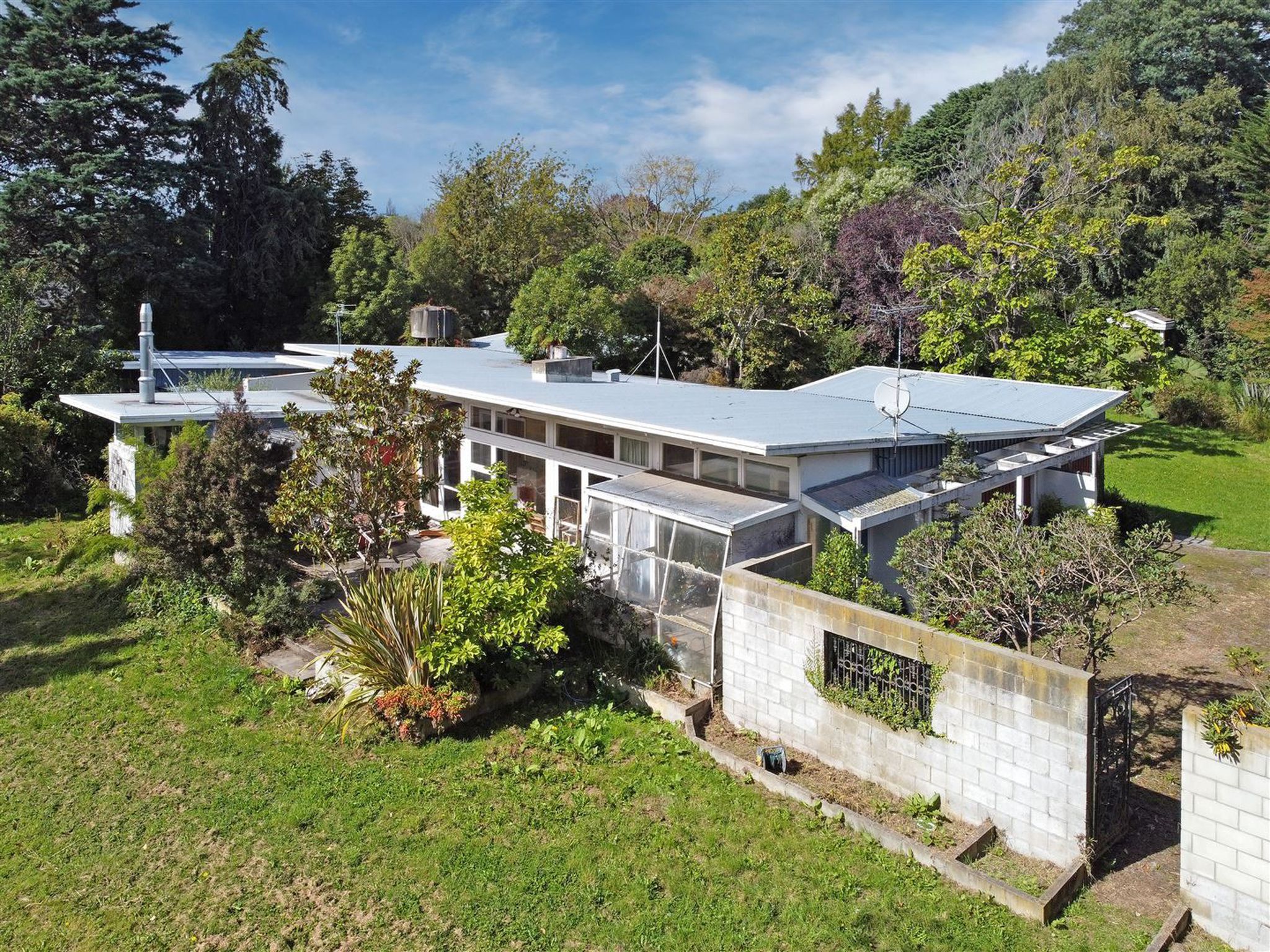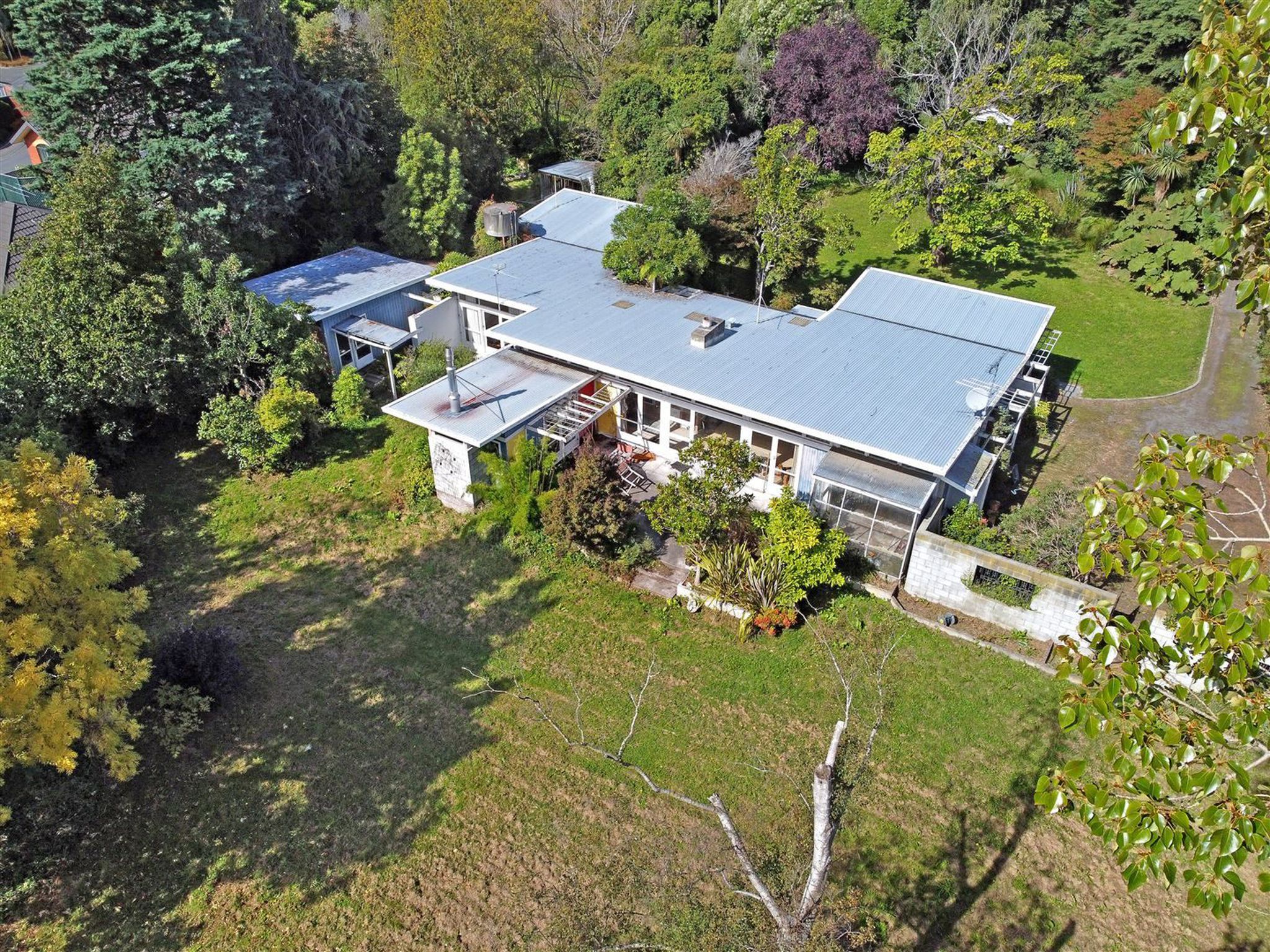In 1953 Archer returned to NZ to take over the family flourmill from his ailing father and set about designing his own house on a two-acre section on the edge of Rangiora. Running east to west, the long narrow rectangular form under a mono-pitched roof recalled recent work by both Pascoe and Plischke, with its deep eaves and its full glazing to the north open to a long terrace, and it is possible that Archer did consult Paul Pascoe during the design's development. The planning could only be described as simple and economic: the maindoor beside the garage opened to a large living space filled with Plischke-designed furniture. Generously proportioned French doors gave access to what later became a large garden with Chinese inflections. A wide chimney divided the living room from the kitchen with a bathroom tucked behind, to the north of which was a single bedroom. Here Archer displayed some innovation, with the chimney constructed from a mixture of exposed concrete block and stone, years before such conscious aesthetic use of utilitarian materials became commonplace in Canterbury. Subsequent extensions in the form of sunrooms, extra bedrooms, an enlarged kitchen, a second garage and a studio/workshop added incrementally from the 1960s-1980s were entirely sympathetic. Part of the distinct character of the Archer House stems from its use of colour: all the timber panelling used on the exterior walls of the house and for the garage door was painted in the colours of De Stijl, the red, blue and yellow planes recalling the inter-war work of Theo van Doesburg.
Text: Jessica Halliday



